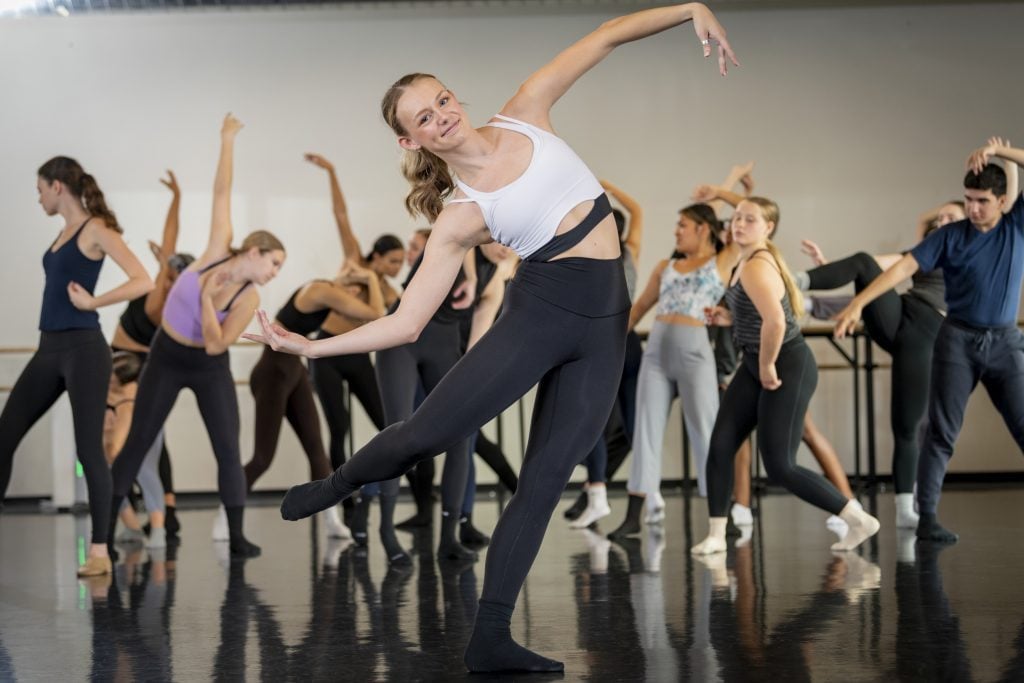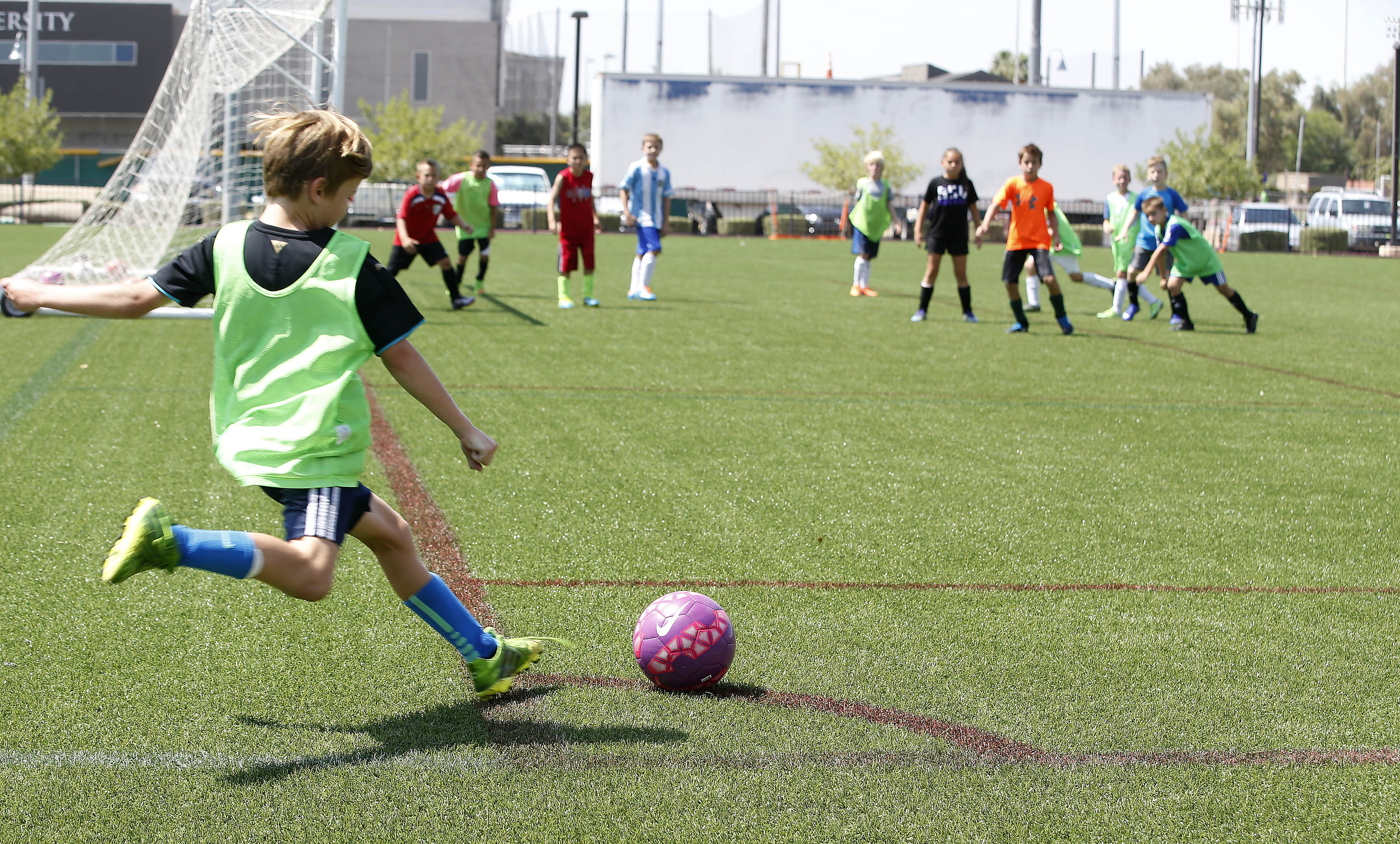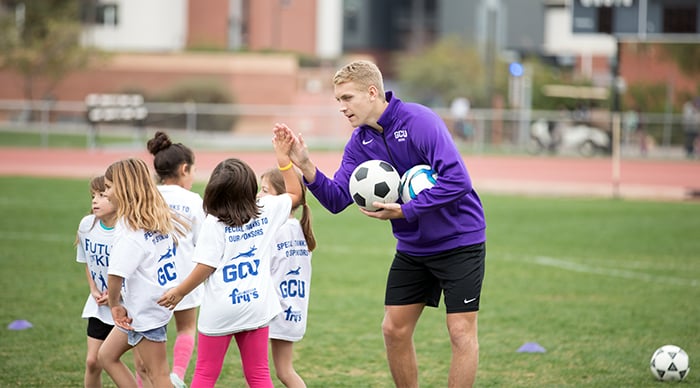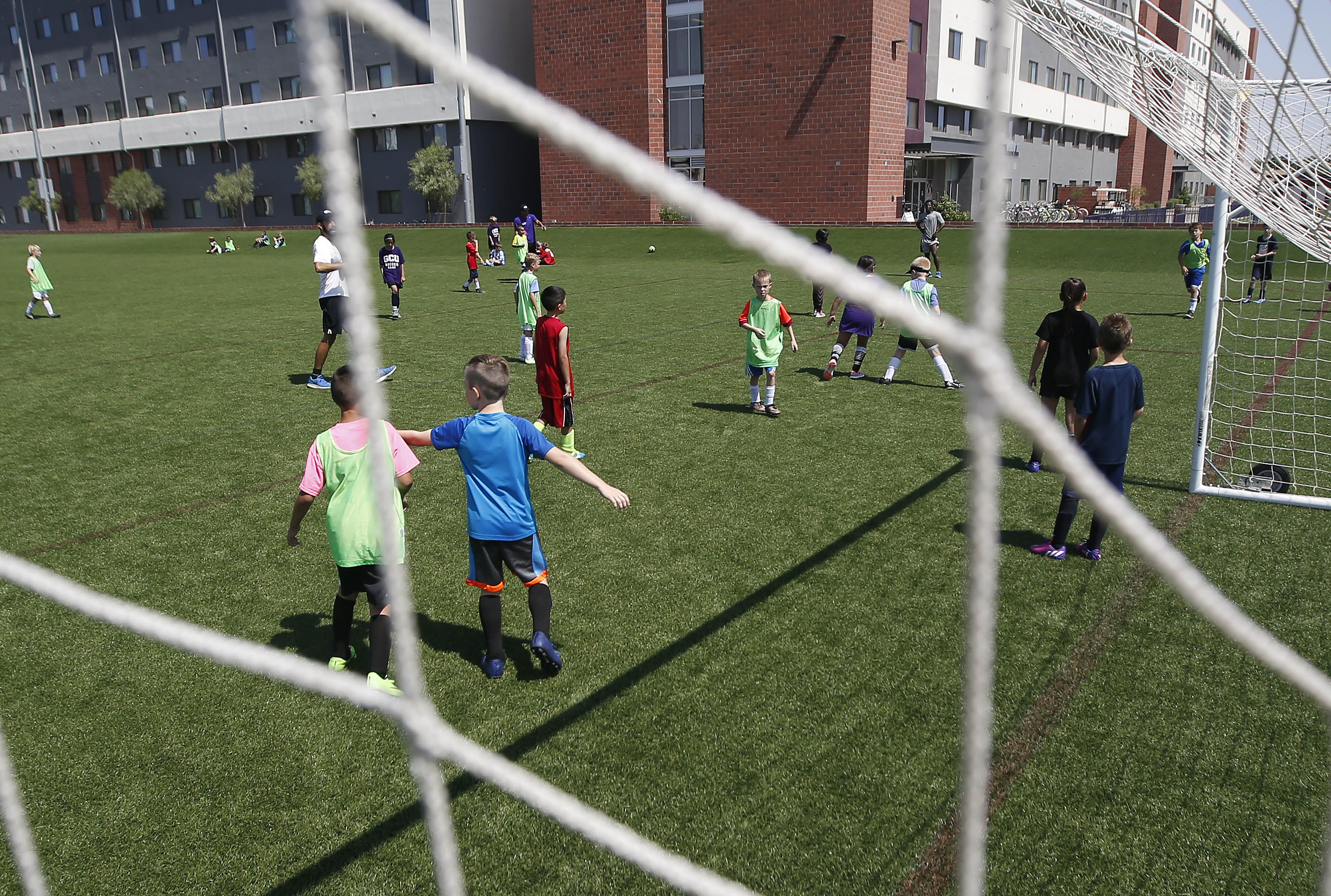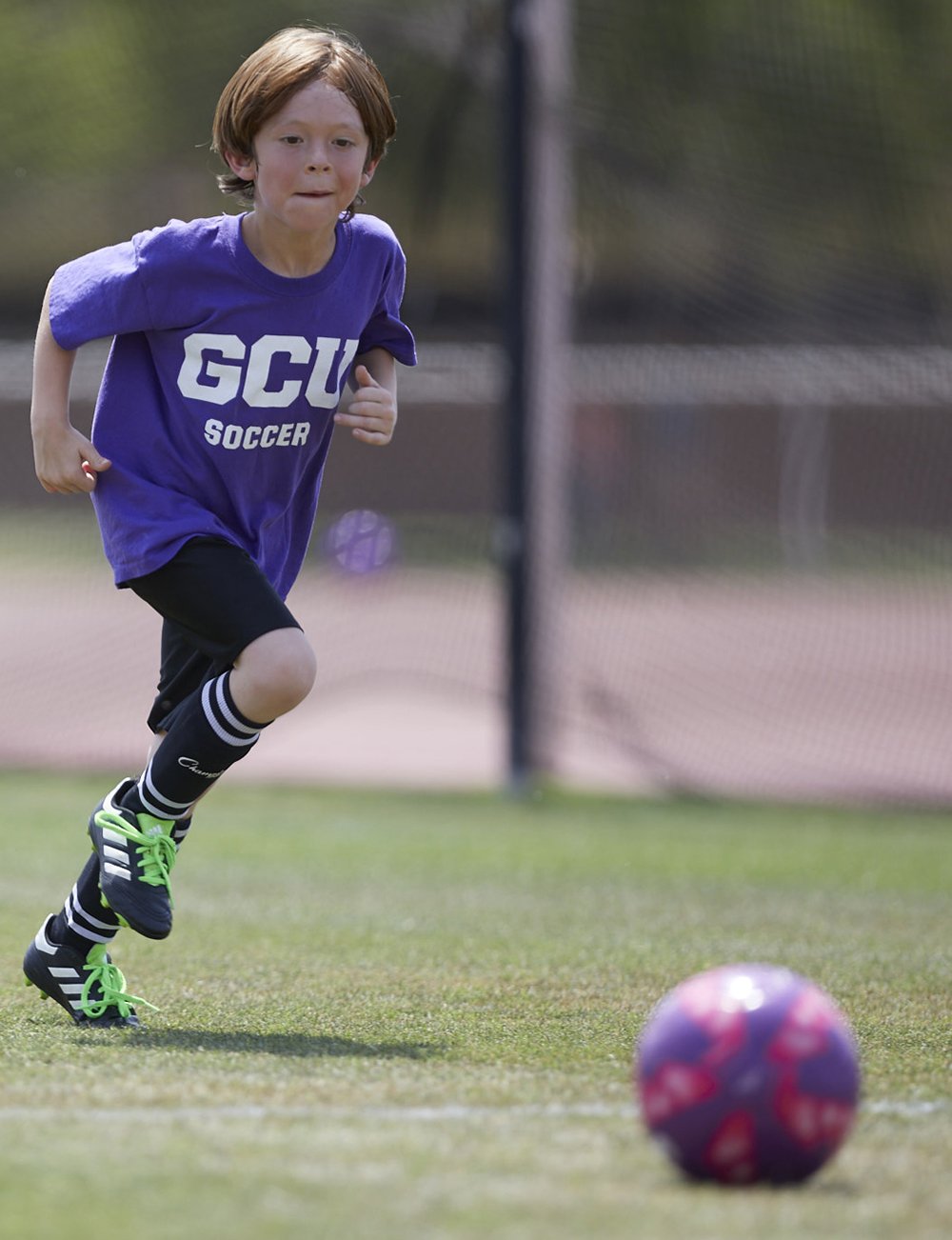
By Lana Sweeten-Shults
GCU News Bureau
Body armor?
Nope.
Sig Sauer firearms?
Not really.
Tasers?
Negative.
When it comes to the kind of front-line assault tackled by the Arizona Cyber Warfare Range - Metro Phoenix, think less traditional military tactical and more terabyte. Fewer combat boots and more CPU. Less tear gas and more toggle keys and task bars.
In short, you won’t see any SWAT-team type attire at this Grand Canyon University-based cybersecurity learning center, which will debut with a soft opening and open house from 11 a.m. to 4 p.m. Oct. 7 and a dignitary- and media-filled grand opening Nov. 15, thanks to a partnership between the University, the Arizona Cyber Threat Response Alliance and a group of dedicated volunteers with the Arizona Cyber Warfare Range.

Instead of SWAT-team attire, you will find a smattering of furniture, a room of servers touting some serious power, and a gaggle of laptops and their computer enthusiasts (namely coders and hackers of the good-guy variety) trying to break into computer networks, clone key cards, crack passwords and the like.
The goal: to teach those interested in cybersecurity how to fight cybercriminals with hands-on activities that make clear what those bad guys do to steal people’s identities, infect devices with malware or ransomware, or hack into accounts.
The open house, dubbed the Cybersecurity Exploration Event, will be in Building 66 at the University’s 27th Avenue location, which is in the midst of being converted into an innovation center.
Tours are scheduled every 30 minutes, beginning at 11 a.m., a barbecue will be open to everyone, and cyberexperts will give demonstrations. Attendees also can delve into a capture-the-flag competition (a game of hackers vs. hacker blockers), password cracking, social engineering, network wiring and network/forensics analysis.
The open house is a precursor to the November grand opening of the facility – one of only two such facilities in Arizona where anyone can learn hands-on cybersecurity tactics. It’s a feather in the cap of the University, which is positioning itself as a big player in science, technology, engineering and math (STEM) and aims to be the go-to place for cybersecurity education. More than 200 are already signed up to attend the grand opening.
“Having a facility like that where students in our cybersecurity programs can be involved is a tremendous opportunity,” said Dr. Mark Wooden, Dean of the College of Science, Engineering and Technology.
Second location
The AZCWR – Metro Phoenix is the second location for the nonprofit range, which was founded about a decade ago in the East Valley.
“The range itself is a community asset,” said Vince Grell, GCU’s Vice President of Operations for Non-Degree Technology Programs.
As such, it isn’t run by the University, though GCU has supplied the space and infrastructure. The University is looking for the range to be yet one more technology resource for its students as it puts its full weight behind STEM programs to meet the need for related careers.
In the past three years, GCU has opened two STEM buildings totaling 300,000 square feet of classrooms and state-of-the-art laboratories for its College of Science, Engineering and Technology. The University in 2016 also partnered with the nonprofit Arizona Cyber Threat Response Alliance, which collaborates with the FBI, the Arizona Counter Terrorism Information Center and the U.S. Department of Homeland Security, to name a few.
It is through this alliance that GCU became connected with the cyber warfare range.
“The range is where a lot of cybersecurity enthusiasts go in and try to hack into systems … and try to better understand how cyberterrorists are penetrating some of the security walls that companies have built up,” Grell said. “The range is run by a group of volunteers who are cyberexperts from throughout the Valley.”

Promotional materials for the Oct. 7 Cybersecurity Exploration Event say, “OMG. Hackers! Run! … Or, instead, come and learn.”
And for good reason.
The image in pop culture of the hacker is someone sitting alone in a dark basement with a laptop “bringing down the world,” said David Hernandez, a volunteer with the AZCWR.
But the volunteers -- about two dozen are active at the Metro Phoenix location, Hernandez said -- aren’t interested in bringing down the world.
Just the opposite.
Their mission is to teach others how to protect their identities and prevent the bad guys from causing destruction. That’s vital knowledge, considering the recent data breach at Equifax, in which hackers were able to access the personal data of 143 million customers via a series of data breaches from May to July 2017.
“What we are here for is to educate the public … to break down that barrier,” said AZCWR volunteer Jesse Reed.
Hands-on learning
Visiting the 4,500-square-foot range means checking in at the building’s front desk, calling a number posted on Building 66’s front door and waiting for a volunteer to meet and escort you back – all very James Bond.
But the space itself is less flashy James Bond and more cybersecurity practical.
You won’t find flashing lights, colors or a lot of bells and whistles. What you will find are laptops, computer monitor, carts, dismantled servers, printers, desks and chairs.
Hernandez points to one area that’s going to be where cybersecurity students can connect networks.
There are also computers and web pages to hack into, dismantled servers to explore, a malware forensics analysis room where analysts try to figure out how malware works and prevent it from spreading, digital forensics (analyzing past security breaches to understand how a cyber attack happened) and a military liaison, too.
Open house attendees will “be able to take apart the servers – a lot of people have never seen the inside of a server,” Hernandez said.
“These carts are planned to be our mobile range. … We do hands-on demonstrations with students,” Hernandez added of bringing cybersecurity technology into schools. “What’s interesting is teachers enjoy it, as well.”
What the organization emphasizes is hands-on learning for anyone who wants to learn. If you want to play with malware, you can do it at the AZCWR, and you don’t need to be an elite hacker to do it.

“Here, we’re not charging anybody to hack on our systems. Anyone can come from the street,” Hernandez said. “My youngest presenter was a 9-year-old when he started. He’s 12 years old now. He presented at our medium to large cybersecurity meet-up. His audience was 110 (people). … On the other side of the scale, we have volunteers who are upwards of 84 years old. … He (one senior volunteer) went into a retirement home and taught them how to do cybersecurity.”
Visitors to the open house will find an area where they can solder together devices and practice RFID cloning, which is copying key cards or work security badges.
“It shows how easy it is to take someone’s identity and walk through a classified building,” Hernandez said.
One of the fun activities will be capture the flag, in which a red team will try to hack into a system and a blue team will try to defend the network.
The purpose of the RFID cloning activity and other similar cybercriminal activities is to teach those interested in cybersecurity what the bad guys do for the purpose of knowing how to better combat them, and ultimately, to better secure our digital lives.
In the end, the AZCWR wants to strengthen the cybersecurity landscape and prevent scenarios like the one that happened at Equifax. Part of that equation means producing a bigger and stronger cybersecurity workforce – something the group sees as a desperate need.
According to data from Cyberseek (www.cyberseek.org), almost 7,200 cyber security jobs are open in Arizona alone and 300,000 nationally.
Reed emphasized that cybersecurity is a potentially lucrative job. The median pay nationally for a cybersecurity analyst is $92,600, according to 2016 statistics from the U.S. Bureau of Labor Statistics.
For GCU, the presence of AZCWR on campus means students have yet one more way to fine-tune their skills before heading off into the post-college world.
While Wooden said GCU would not likely hold many classes there, students will be assigned work that can be completed at the range, and he sees it as a place for students to build simulations, for example. “It can be a place they can go outside of class, where they can network.”
He added that the college is looking to use the facility for cybersecurity boot camps in which students can receive certifications that will help them work in cybersecurity, even without a full degree.
Grell said the plan is for AZCWR – Metro Phoenix to be open from 5 a.m. to 1 a.m. Monday through Saturday and, “as long as there’s a volunteer, the public can come.”
IF YOU GO
What: Soft opening and open house of the new Arizona Cyber Warfare Range – Metro Phoenix
Where: Building 66 at Grand Canyon University, 5115 N. 27th Ave.
When: 11 a.m. to 4 p.m. Oct. 7
Admission: Free
Registration: Register at www.eventbrite.com
Grand opening: This soft opening is leading up to the GCU grand opening of the facility Nov. 15.
Information: www.azcwr.org
Contact Lana Sweeten-Shults at (602) 639-7901 or [email protected].


